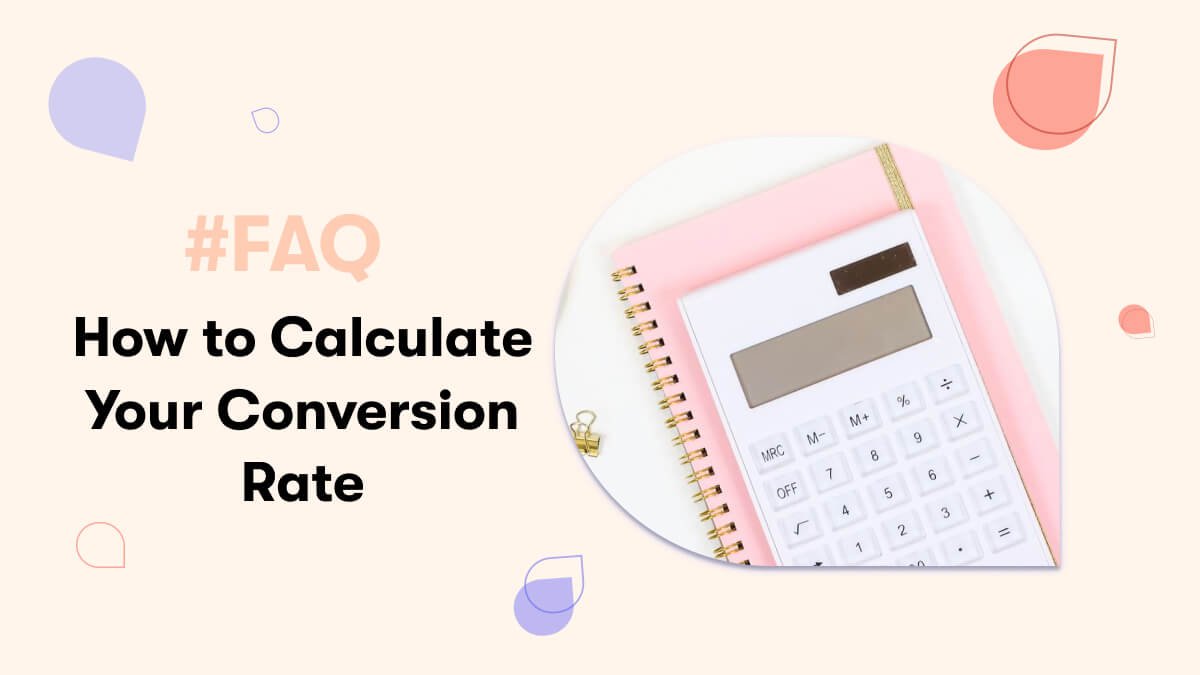How Do You Calculate Conversion Rate?
Here are the best ways to calculate your conversion rate and why sometimes it's not as accurate as you think. Read on.
Published November 5, 2024.

The conversion rate is the primary metric that marketers study when they do conversion rate optimization. Calculating your conversion rate can be done in one of two ways. You can calculate the conversion rate by the number of total conversions divided by the number of total users.
So for example, if you had 1,000 visitors and 200 conversions, your conversion rate would be 200 ÷ 1,000 = 20%.
You can also calculate the conversion rate by taking the number of total conversions from a unique list of visitors divided by the sum of that same unique list of visitors.
There is an additional hybrid that you can use to estimate conversion rate, which may be slightly more accurate (from a conversion rate best practice perspective) than calculating conversion rate by sessions.
The calculation takes a static time frame and determines the total number of conversions on your website and then divides that value by the total number of unique visitors on your website.
Although the conversions themselves may not be coming directly from the unique visitors being reported on, if you check this hybrid conversion rate over a time frame (let's say once per week on a Monday), you will start to see patterns that will help you estimate what's the real conversion rate (by visitor). Calculating the actual conversion rate for a certain subset of visitors can be quite difficult and oftentimes is not that accurate anyway. And so this serves as an alternative, that when tracked over a certain time frame, will reveal a pattern of increased clarity.
Why is a conversion rate calculation sometimes not accurate?
One of the main issues with calculating conversion rate by unique user is the fact that the same user may be using multiple devices for which their cookies and other local tracking data are reset (or just simply new).
And so, unless there is some advanced cross-device tracking setup (in most cases there isn't, especially in the age of increasing privacy), the same individual may be considered as 2 or 3 unique visitors, even though they are only one person.
What's far more important than the exact 100% accurate calculation of conversion rate, is that progress is being made to increase conversions on the website. And even more importantly, the conversion rate calculation stays consistent throughout the period of optimization.
Obviously, if you were to make efforts to increase the conversion rate of a website, but then change how you actually calculate conversion rate in the middle of that effort, your data is going to be greatly affected, thus making your efforts far less valuable.
Like many things in a digital world, you're not going to get 100% data accuracy, but rather if you track the same metric over a time frame and consistently work towards improving it, you'll have a good sense of the "real" value and by taking specific action to influence it.
A decrease in your conversion rate doesn’t necessarily mean that you need to optimize your page or start an A/B test. There are numerous factors that could influence your conversion rate, such as:
- Quality of your traffic
- Turning off your ads for a specific channel
- Launch of a popular product
- Quantity of your traffic (a boost from one or more channels)
- An influencer featuring your company/product
- Low inventory of popular products
So try to isolate the variables and get as much clarity on the different factors that could be affecting your conversion rate before starting a CRO campaign.



